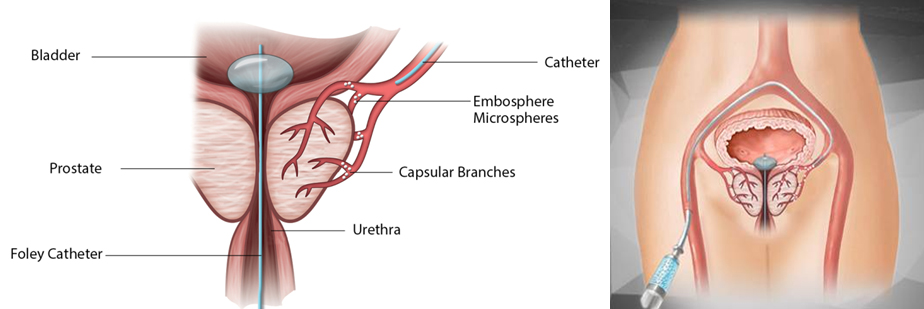Prostate gland hypertrophy (enlargement) is a common medical problem in men over 50. The prostate begins to grow after the age of 25. As the prostate enlarges, it presses on the bladder and the urethra, obstructing the flow of urine and causing discomfort.
Prostate gland hypertrophy is related to lower urinary tract symptoms, such as a urine stream that is hesitant, interrupted or weak and an urgent need to empty the bladder. Other symptoms include leaking, dribbling, feeling that the bladder is not empty after urinating and more frequent urination, especially at night.
Patients may also experience symptoms related to bacteria in the urine remaining in the bladder, such as frequent urinary tract infections and the development of bladder stones. In more severe cases, prostate gland hypertrophy may lead to urinary retention (being unable to urinate) and kidney failure, though this is less common.
During the initial evaluation your doctor will ask you questions about your medical history and your urinary problems. The diagnostic work-up includes a digital rectal examination and testing your urine and blood.
You may have an ultrasound through your abdomen or rectum to calculate the size of your prostate and evaluate its structure. Ultrasound may also be used to calculate the residual urinary volume after urinating.
Once the diagnosis is accurately establisheda range of different treatment options is available for patients whose Prostate gland hypertrophy (BPH)is causing problems. Remember before considering treatment to always weigh up the risks of treatment against the potential benefits. No medical treatment is totally risk free, and if your Prostate gland hypertrophy (BPH) is causing no problems, it would be silly to take any risk however small. The options for active treatment nowadays are many and varied including drugs, surgery, and prostatic artery embolisation
Drugs: Drug treatment of BPH is a new development, and data is still being gathered on the benefits and possible adverse effects of long-term therapy. Currently, two types of drugs-5-alpha-reductase inhibitors and alpha-adrenergic blockers-are used to treat BPH. Preliminary research suggests that these drugs improve symptoms in 30 to 60% of men taking them, but it is not yet possible to predict who will respond to medical therapy, or which drug will be better for an individual patient.
Surgery: Prostatectomy is a very common-operation. A prostatectomy for benign disease (BPH) involves removal of only the inner portion of the prostate (simple prostatectomy). This operation differs from a radical prostatectomy for cancer, in which all prostate tissue is removed. Simple prostatectomy offers the best and fastest chance for improving BPH symptoms, but may not totally alleviate discomfort. For example, surgery may relieve the obstruction, but symptoms may persist due to bladder abnormalities.
Surgery is also associated with the greatest number of long-term complications, including:
- Impotence
- Incontinence
- Retrogradeejaculation (ejaculation of semen into the bladder rather than through the penis)
The need for a second operation (in 10% of patients after five years) due to continued prostate growth or a urethra stricture resulting from surgery
Prostatic Artery Embolisation: Embolisation of the prostatic artery is a minimally invasive method which relieves the symptoms of an enlarged prostate by reducing blood flow to the veins that supply the affected area.
Embolisation of the prostatic artery is a minimally invasive method which relieves the symptoms of an enlarged prostate by reducing blood flow to the veins that supply the affected area.

The procedure works by reducing or stopping blood flow to the vessels that supply the central part of the prostatic tissue, thus relieving symptoms.
There are usually one or two vessels on each side (right and left) which supply the blood for the prostate. The interventional radiologist will insert a catheter into a blood vessel in your groin and guide the catheter under imaging to each prostatic artery. They will then inject microparticles (resin particles smaller than a grain of sand) into the prostatic arteries, causing the blood flow to the central tissue of the prostate to decrease or stop.

Benign prostatic hyperplasia has a number of unpleasant symptoms. Prostatic embolisation can relieve your symptoms without you needing to risk surgery.
Minor risks include bruising in the groin. More significant risks include the possibility of the microparticles moving to another area of your body and blocking other artery branches.
